provenance: Alain Bovis Jean Paul Agogue
AHDRC 0201592
A 1994 4/12 "the bagirmi dolls and kenga dolls " from Pierre Harter article in Tribal Art magazine (see last photo) mentions that kenga dolls are of exceptional size and that the patina is located in the middle of the body, a place which perhaps offered the best grip during fertility rites. The dance, which takes place in the mountainous area, is performed in honor of the Margaï, geniuses of the high places venerated by the populations of the mountains, the Hadjeray"mountain people " (Dangaléat, Kenga and Diongor), in order to solicit good harvests from them. and protection against natural disasters. t Francois Mottas comments that this doll reproduces with fairly great precision the dance headdress of the Dangaléat (and perhaps of the neighboring Kenga and Diongor) The leading dancers wear the hairstyle that is reproduced on this doll. It consists of a brass circle surrounding the head, often completed by a brass crest. On the front of the circle are fixed two raised brass horns; two headbands made of strips of brass surround the face. He makes reference to the book where we can see photos of this dance ' Danses d'Afrique' by Michel Huet (texts by Jean Laude and Jean-Louis Paudrat) published by Editions du Chêne, Paris 1978. Michel Huet's black-white photos were taken at the very beginning of the 1950s in the Korbo region, among the Dangaléat.
a similar doll by Pierre harter was sold at Christie's, Paris, "Art Africain, Océanien et Précolombien", 10 December 2003. Lot 192, Est. €4,000-6,000. made € 17.625 incl. premium
we find sometimes the same model of doll but without any patina and they seem completely new







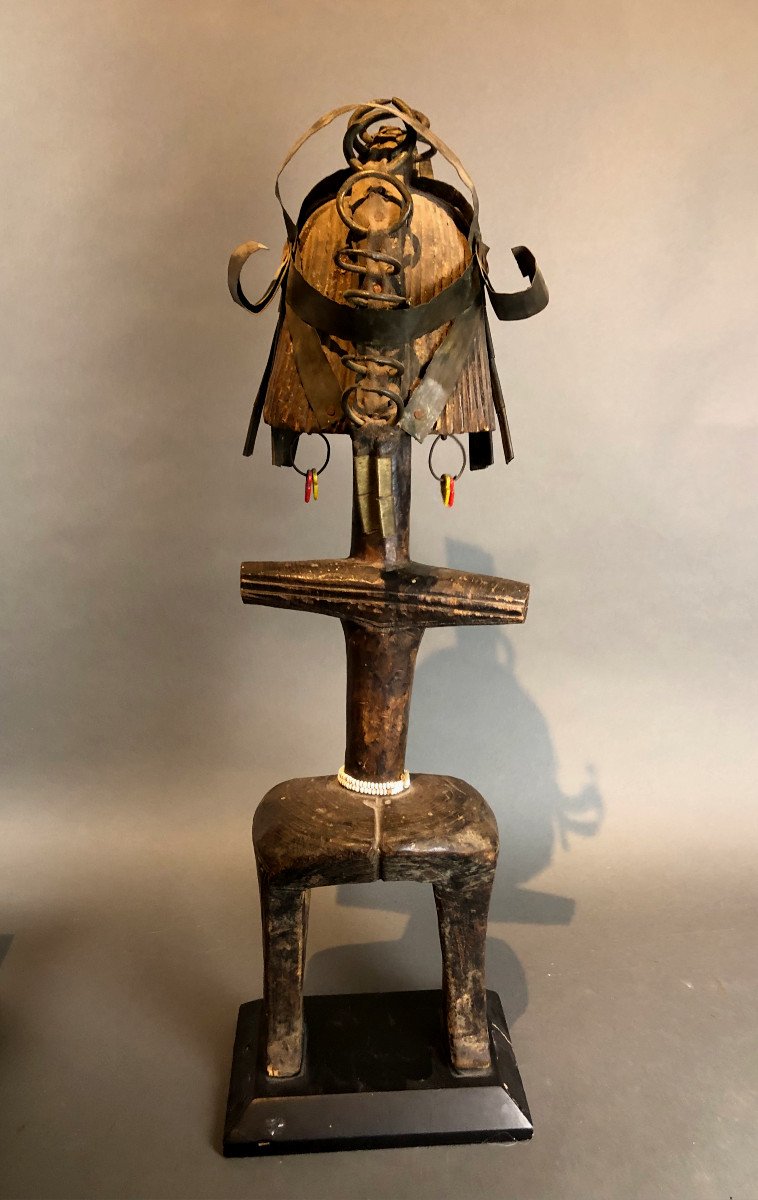


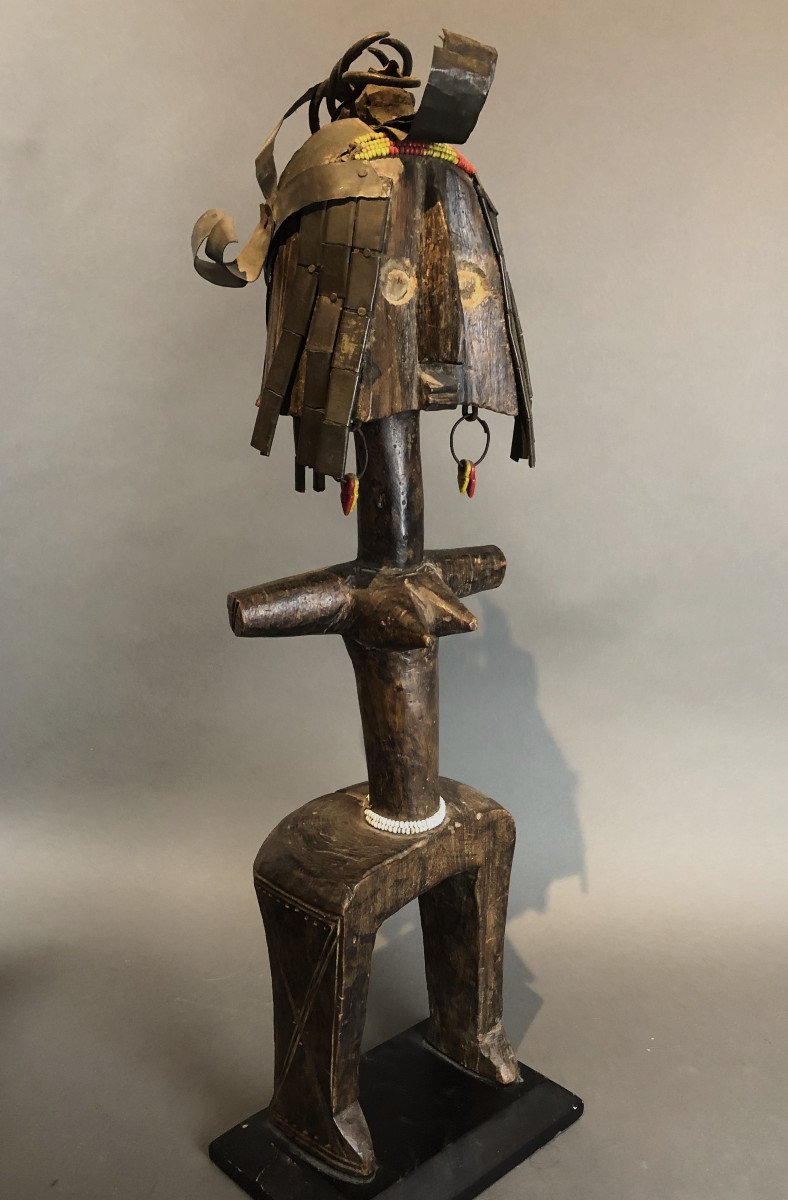

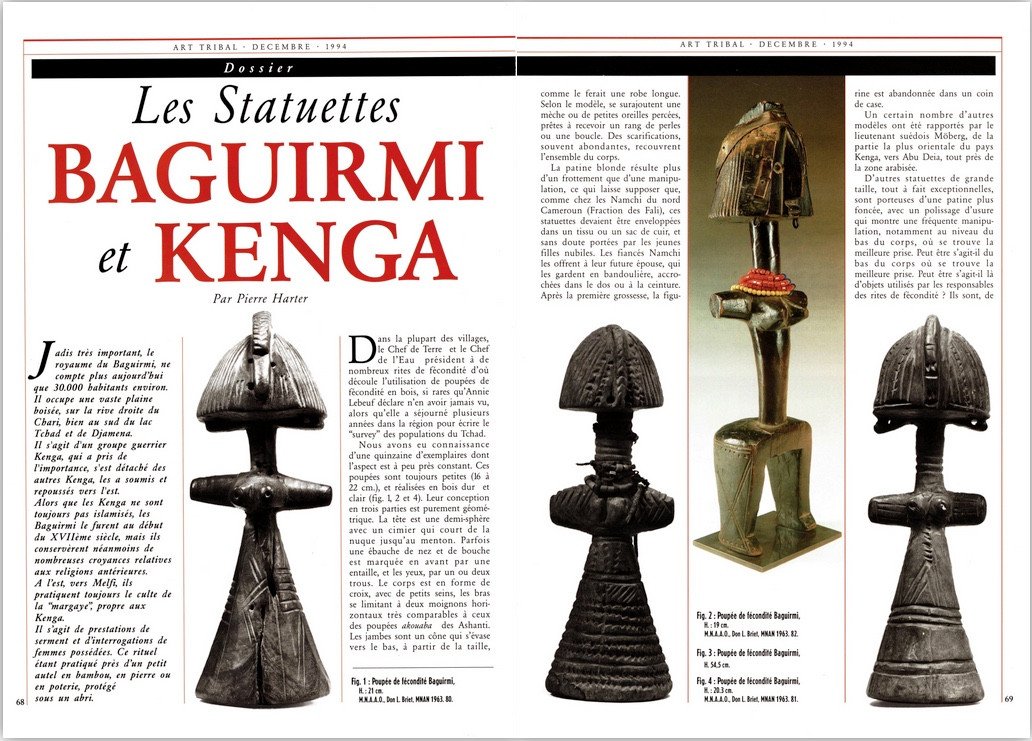
















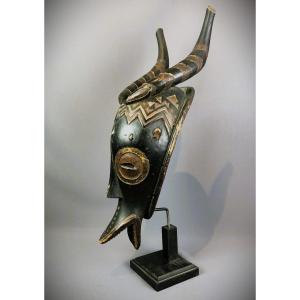


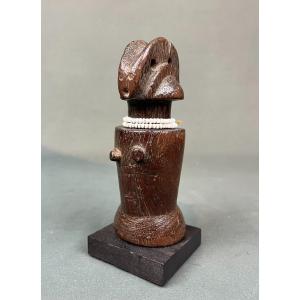




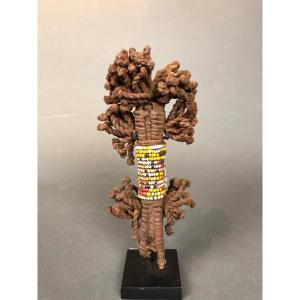
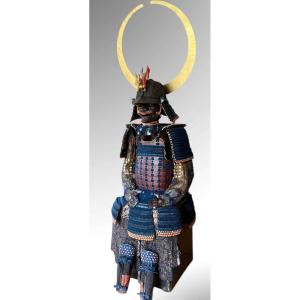











 Le Magazine de PROANTIC
Le Magazine de PROANTIC TRÉSORS Magazine
TRÉSORS Magazine Rivista Artiquariato
Rivista Artiquariato